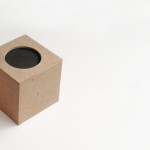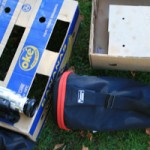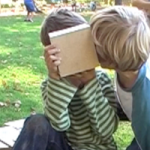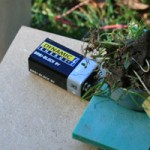Moritz’ Page
Cubicles: Designing playful interactions for children in exploring their world.
 In my Thesis I will explore the world of tangible interfaces for children to support them in their explorative and creative approach to their environment. My basic idea is to give the children tools which they could include in their everyday play activity. Therefore the objects will be devided into two categories:
1. Objects which are able to detect input from the child or the surrounding (e.g. sound, light, movement, ...). This objects could be seen as sensors for the outside world.
2. Objects which are able to respond to the input from the child or the surrounding (e.g. with sound, vibration, movement). This objects are actuators giving feedback to the children.
The objects I will introduce will have the capability to communicate among each other giving the children the opportunity to set-up multiple different configurations. Interesting will be the Use Cases in which the children will include the objects.
The main question is:
In my Thesis I will explore the world of tangible interfaces for children to support them in their explorative and creative approach to their environment. My basic idea is to give the children tools which they could include in their everyday play activity. Therefore the objects will be devided into two categories:
1. Objects which are able to detect input from the child or the surrounding (e.g. sound, light, movement, ...). This objects could be seen as sensors for the outside world.
2. Objects which are able to respond to the input from the child or the surrounding (e.g. with sound, vibration, movement). This objects are actuators giving feedback to the children.
The objects I will introduce will have the capability to communicate among each other giving the children the opportunity to set-up multiple different configurations. Interesting will be the Use Cases in which the children will include the objects.
The main question is:
How can we design simple interactive objects for children to be accepted and integrated in the process of exploring their environment?
I will propose an approach and strategy how to develop interactive cubes with embedded and playful interaction for children. Further questions could be: In which Use Cases do the children include the objects? What kind of relationship will emerge between the children and the objects, when they become intelligent and smart? Is it necessary to indicate the additional (interactive) value of the objects besides their interactivity itself?Methodology: Analog Prototypes

For my project I will focus on a target group of children in the age between five and around eight years. This is normally the time when they are in a stage between kindergarten and primary school. The special thing about this age-group is, that they are able to understand more complex subjects as well…
In the field: Observating children playing with the prototypes

Video was used to record the interactions of the children and the objects. The children I was observing were boys between 5 and 7 years old.
Analysis: What I’ve learned from the children

The results of the test with the objects could be seen from two different angles. First there are the objects themselves, which were used and explored by the children. This insights of how the children used the objects gave me insights about the objects themselves. Second there where actions around the objects which aren’t obvious…
Insights: Precis of the insights and further steps

1. Insights Through utilizing “Analog Prototypes” it was possible for me to proof first theoretical and conceptional assumptions. Also this prototypes were very good to get insights about how children interact with objects, how they approach them how they integrate them into their play. Besides the conceptional findings which could be applied to the design…